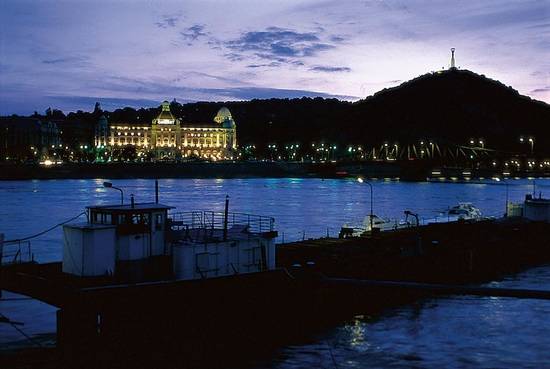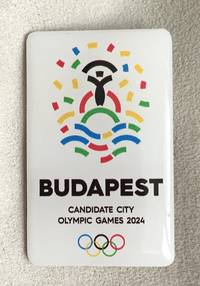Rising steep and craggy over Budapest from the west bank of the Danube is Gellért Hill, the best vantage point in the city. If you want to test the panorama photo function on your smartphone, this is the place to come. The Habsburgs were well aware of its commanding position too: after the suppression of the 1848 Hungarian revolution they built a citadel here, from which gun shafts pointed across the river into Pest to remind a rebellious population who was in charge. The Hungarians called it the Budapest Bastille and universally loathed it. Today its influence is benign. It is beloved by locals and tourists alike for its fine views.

Others besides the Habsburgs have been mindful of the hill’s supreme location. “It is here,” wrote the Panoráma Guide to Budapest in 1969, “at the southeastern corner of the old citadel, that Zsigmond Kisfaludi Strobl’s beautiful 29-metre-high Liberation Monument was erected in 1947. In the centre stands a female figure, a symbol of freedom, holding aloft the palm of victory and peace. Her silhouette can be seen from almost every corner of the city. Over the course of time this graceful sculpture has blossomed into a symbol. Small-scale copies of it can be found in offices and public buildings throughout the land.”
It’s all still true except for the name. The statue is now the Freedom Statue, evoking Liberty instead of “Liberation”, because the liberation in question was that of Hungary by the Soviets, the Allied troops who beat back the Germans and freed the city from Nazi rule in 1945 but brought a different tyranny in its stead. The Russian marshal Kliment Vorosilov was placed in charge of consolidating Communist control of Hungary and it was he who chose the sculptor, Kisfaludi Strobl (1884–1975), an artist known for statue groups composed of grandiose, monumental figures. Twenty years previously he had produced a memorial to the fallen of World War One for the city of Nyíregyháza, its central figure a muscular youth beating down a many-headed dragon with his bare fists. Strobl used the motif again for the Soviet memorial, but relegated it to a supporting role, placing a heroic nude dealing a death blow to the Hydra to one side. It was a good decision to leave it at the side, because this kind of bombastic allegory rings so horribly hollow. The stock hero standing for whatever he is required to stand for, defeating a stock embodiment of evil which can be equally flexibly interpreted. Posterity has chosen to ignore the allegorical side sculptures. It has also removed the pair of Soviet soldiers who flanked the Freedom statue and picked off the grateful inscription to the Soviet fallen. The statue is now dedicated to the memory of all who have given their lives for the independence, freedom and prosperity of Hungary. The central figure of the slender young woman reaching for the sky from her victor’s podium has remained constant, though, and her silhouette is as iconic as ever.
Budapest is one of the candidate cities hoping to host the 2024 summer Olympics. The Freedom Statue is its logo.
Annabel Barber







